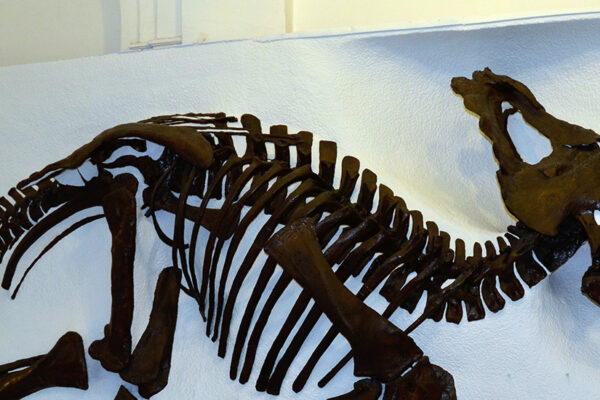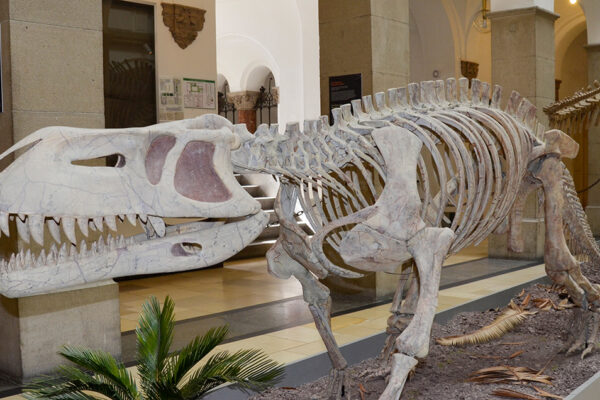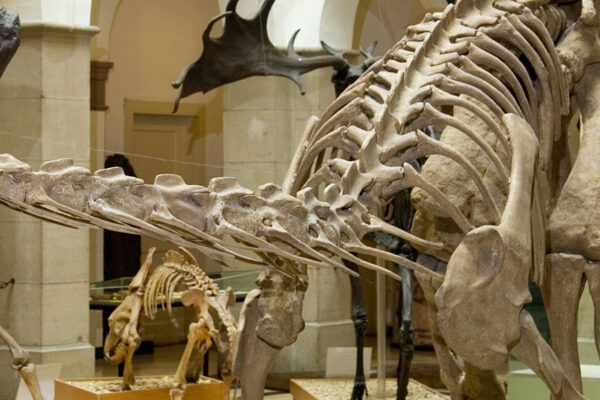Three-Horned Dinosaur
Triceratops prorsus

Lance-Formation, Late Cretaceous: Maastrichtium, approx. 66 Mio. years old
Niobara County, Wyoming, USA
Triceratops was a late representative of the horn-bearing dinosaurs (Ceratopsia), a subgroup of the exclusively herbivorous avian dinosaurs (Ornithischia). Ceratopsians were highly evolved herbivores with an effective chewing mechanism in which plant food was bitten off with a sharp “parrot beak” and then shredded by dental arrays of hundreds of teeth. The conspicuous horns and the large neck ruff, which give Triceratops its name, probably served primarily as display organs that played a role in the social behavior of the animals and only secondarily for defense against predators.
Triceratops is one of the last and largest ceratopsians and therefore also one of the last ornithischians. They became extinct at the end of the Cretaceous period in a mass extinction triggered by a meteorite impact, together with all other dinosaurs, with the exception of the birds.
SNSB-BSPG 1964 I 458
Original with a few additions






